Abstract
In the acidotic dog, alanine is extracted from plasma and utilized as a precursor of ammonia. Simultaneously, it is formed de novo within tubular cells and added to renal venous blood. When plasma concentration is within a normal range, production of alanine greatly exceeds utilization. Increasing the plasma concentration reduces production and increases utilization of plasma alanine. The infusion of glutamine increases the renal production of alanine without appreciable change in utilization of plasma alanine. These results are consonant with the view that alanine is metabolized by transamination with α-ketoglutarate to form glutamate, which is subsequently deaminated oxidatively to liberate ammonia. Conversely, alanine is formed by transamination of pyruvate with either glutamate or glutamine and is added to renal venous blood. The balance between production and utilization is dependent, at least in part, on the concentrations of the reactants.
Full text
PDF
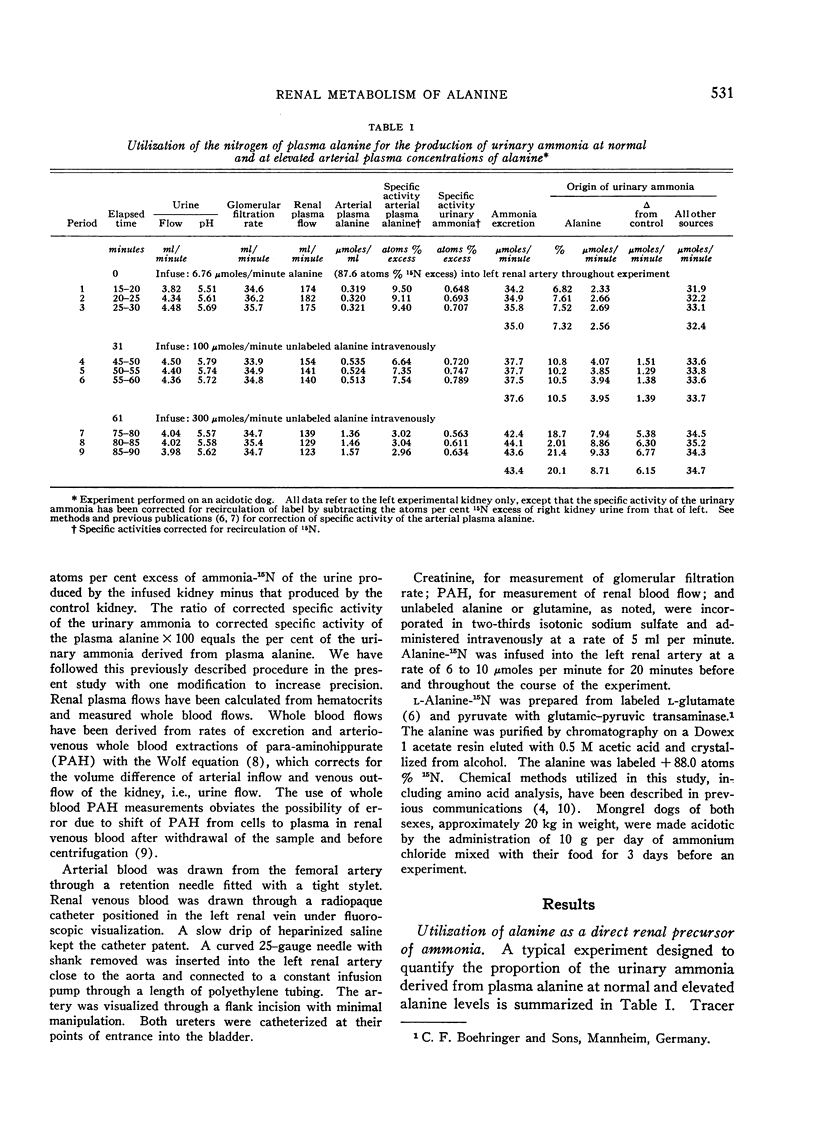
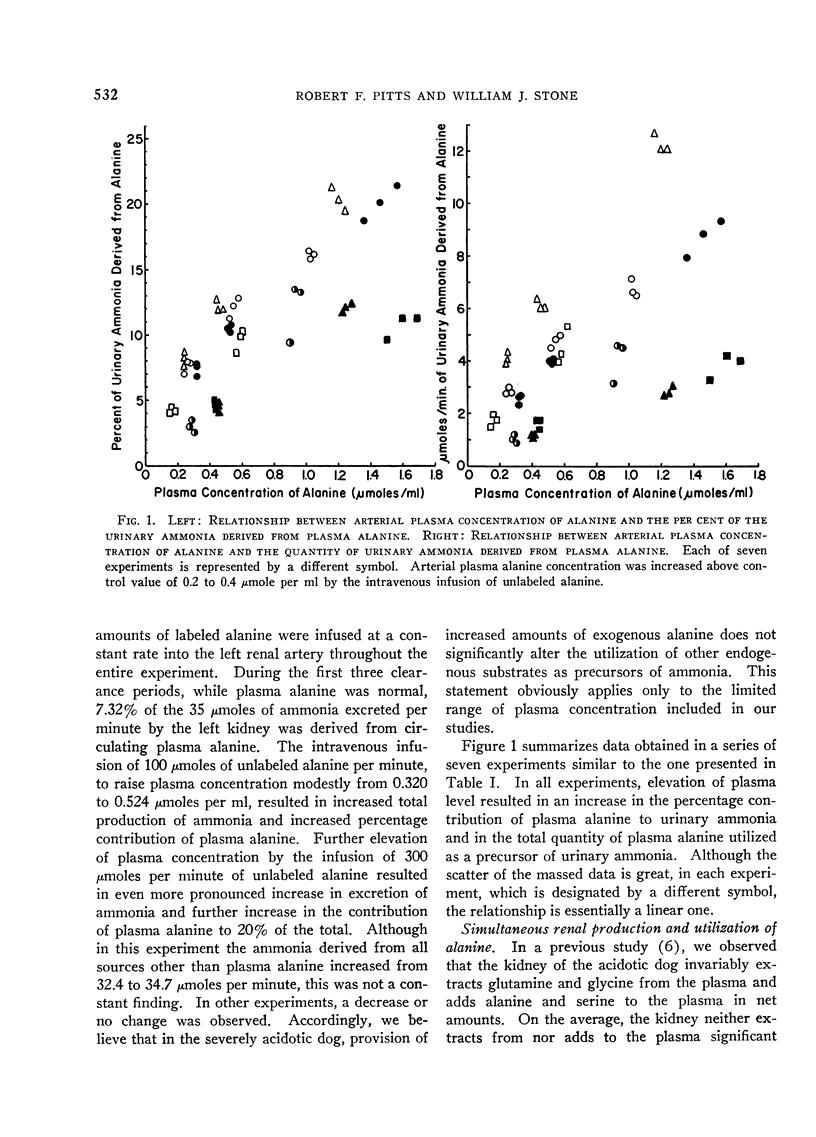
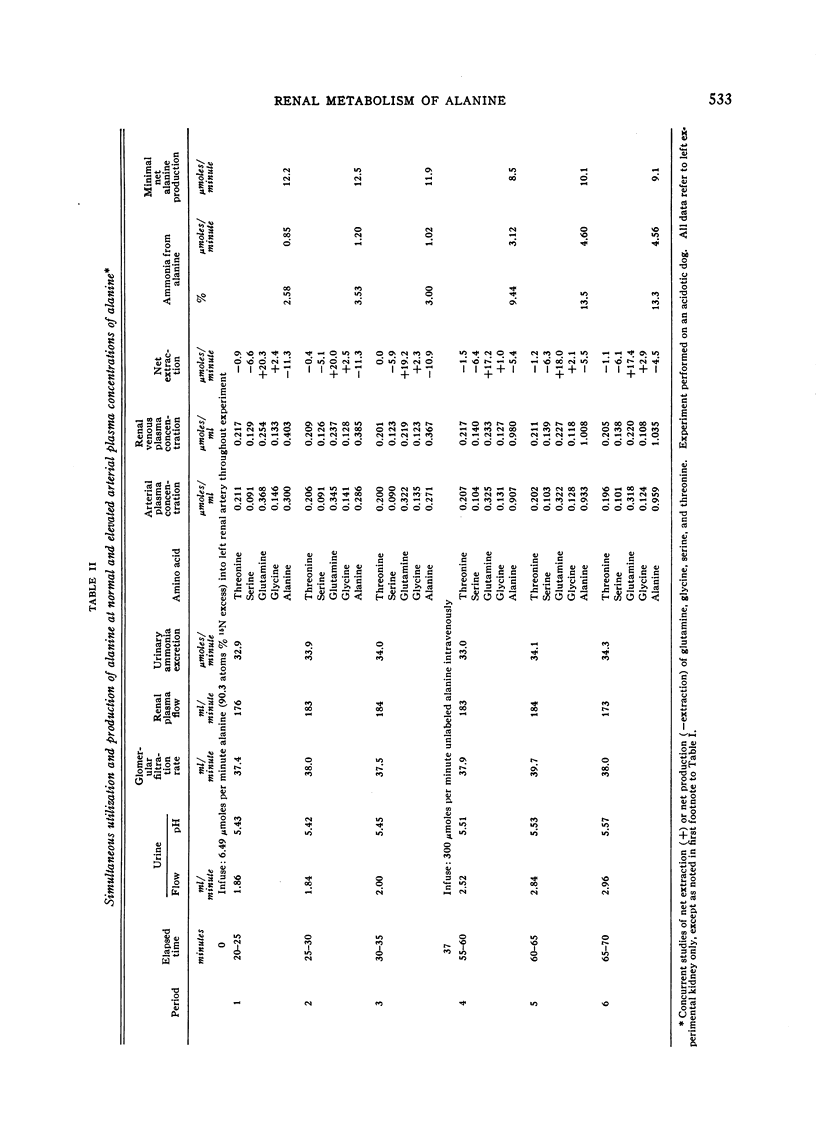
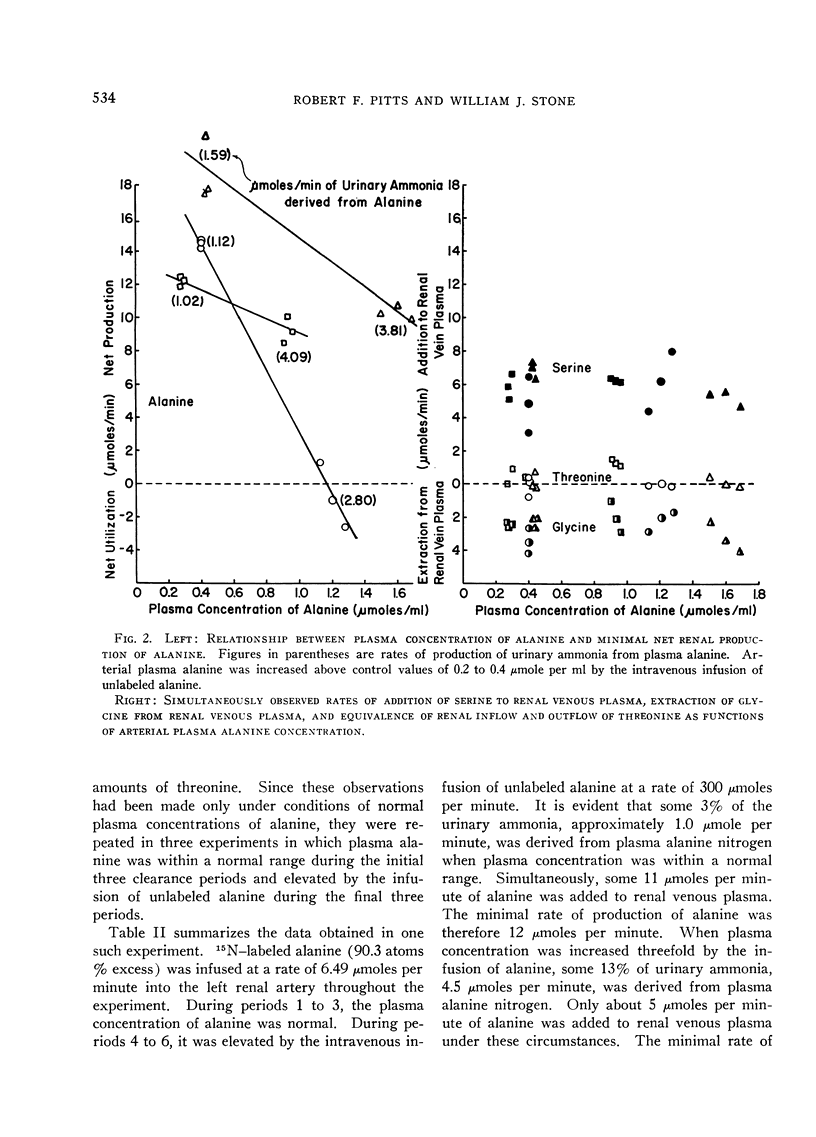
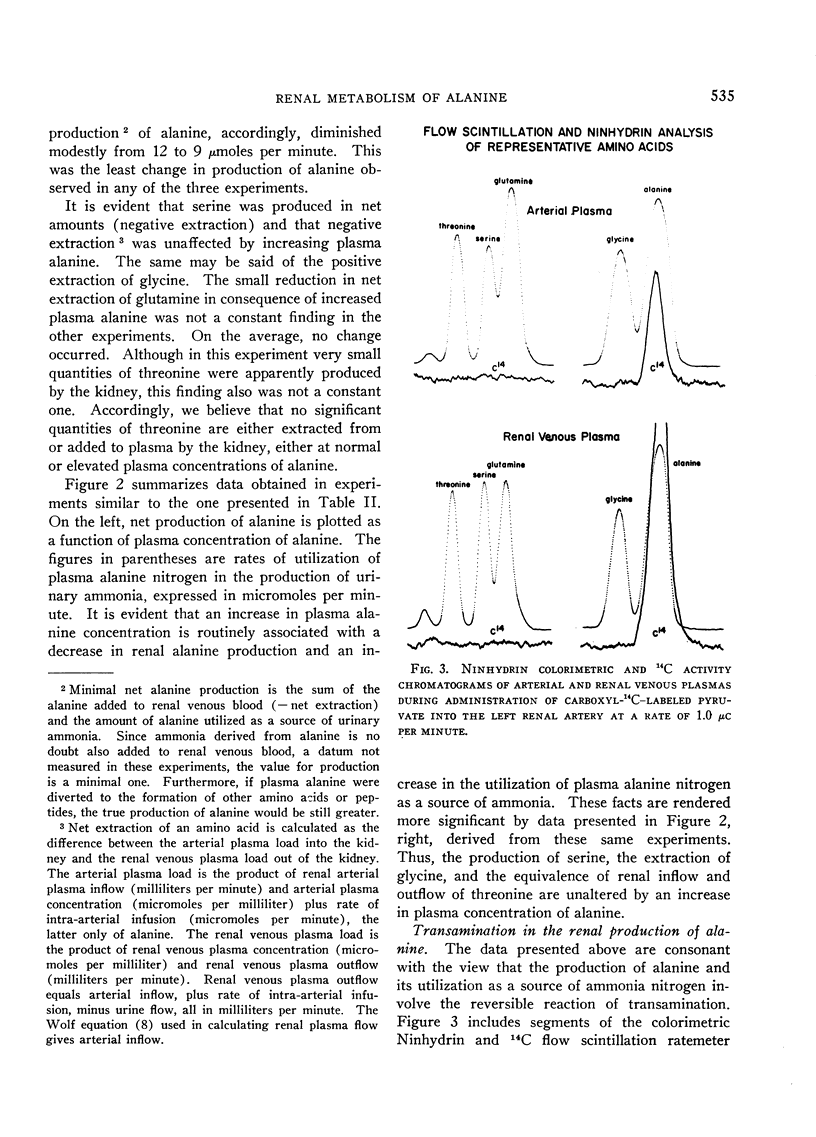
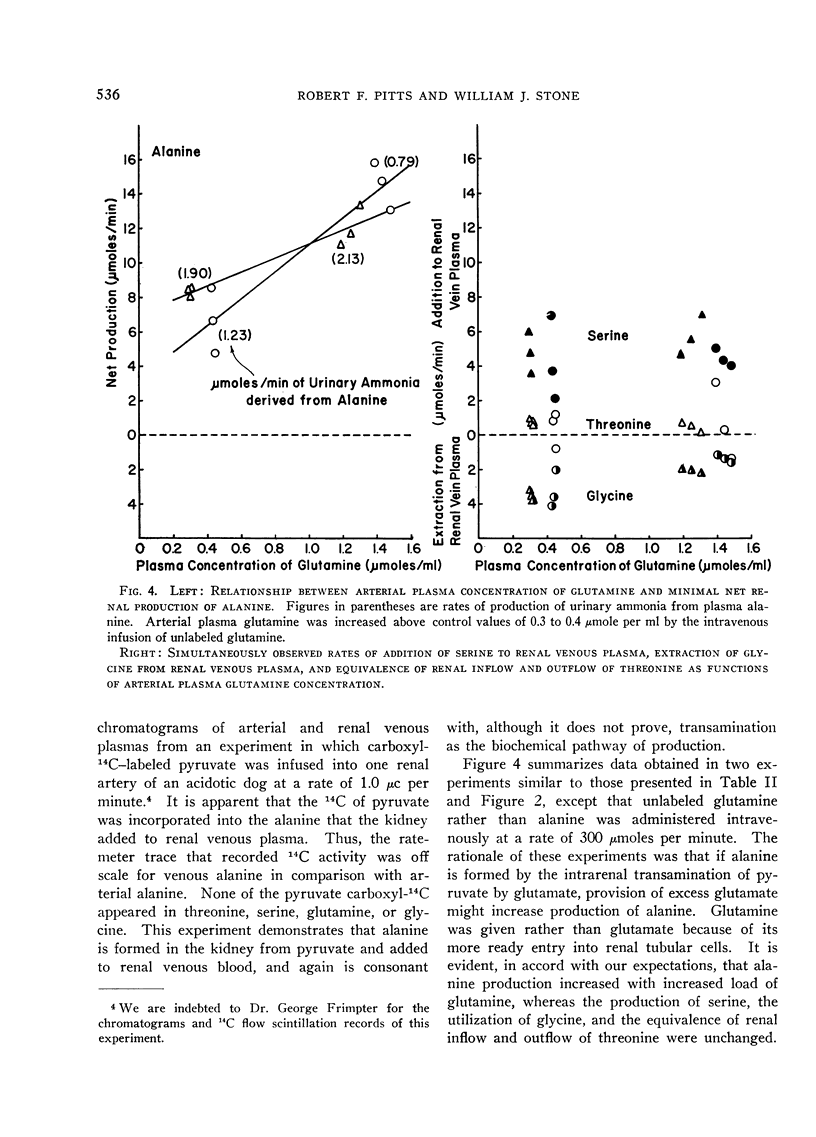
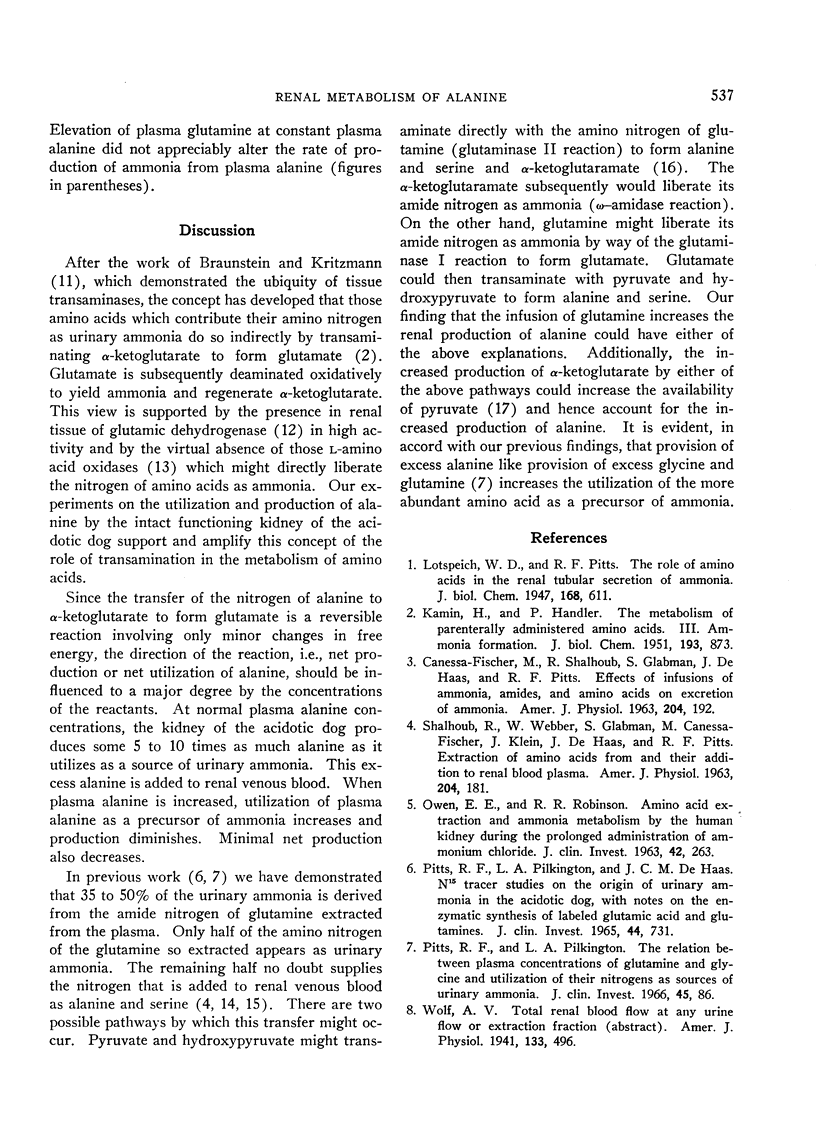
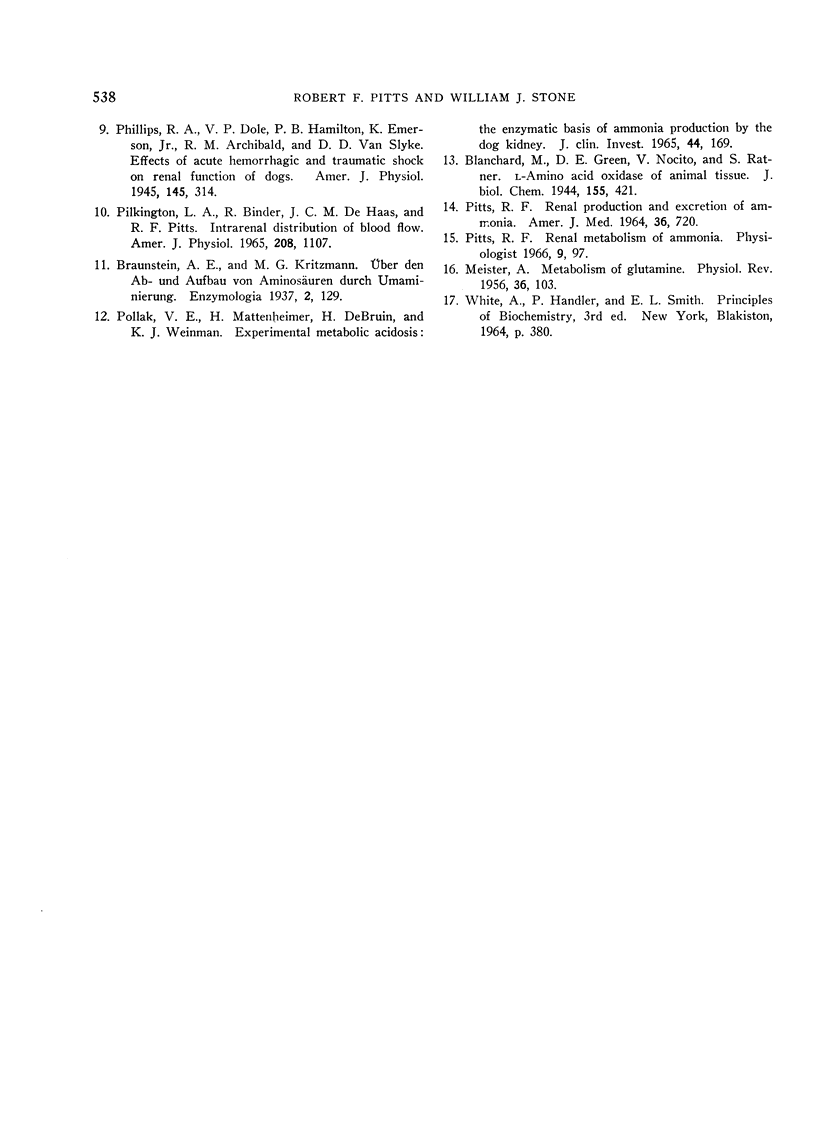
Selected References
These references are in PubMed. This may not be the complete list of references from this article.
- CANESSA-FISCHER M., SHALHOUB R., GLABMANS, DEHAAS J., PITTS R. F. Effects of infusions of ammonia, amides, and amino acids on excretion of ammonia. Am J Physiol. 1963 Feb;204:192–196. doi: 10.1152/ajplegacy.1963.204.2.192. [DOI] [PubMed] [Google Scholar]
- KAMIN H., HANDLER P. The metabolism of parenterally administered amino acids. III. Ammonia formation. J Biol Chem. 1951 Dec;193(2):873–880. [PubMed] [Google Scholar]
- MEISTER A. Metabolism of glutamine. Physiol Rev. 1956 Jan;36(1):103–127. doi: 10.1152/physrev.1956.36.1.103. [DOI] [PubMed] [Google Scholar]
- OWEN E. E., ROBINSON R. R. Amino acid extraction and ammonia metabolism by the human kidney during the prolonged administration of ammonium chloride. J Clin Invest. 1963 Feb;42:263–276. doi: 10.1172/JCI104713. [DOI] [PMC free article] [PubMed] [Google Scholar]
- PILKINGTON L. A., BINDER R., DEHAAS J. C., PITTS R. F. INTRARENAL DISTRIBUTION OF BLOOD FLOW. Am J Physiol. 1965 Jun;208:1107–1113. doi: 10.1152/ajplegacy.1965.208.6.1107. [DOI] [PubMed] [Google Scholar]
- PITTS R. F., PILKINGTON L. A., DEHAAS J. C. N15 TRACER STUDIES ON THE ORIGIN OF URINARY AMMONIA IN THE ACIDOTIC DOG, WITH NOTES ON THE ENZYMATIC SYNTHESIS OF LABELED CLUTAMIC ACID AND GLUTAMINES. J Clin Invest. 1965 May;44:731–745. doi: 10.1172/JCI105186. [DOI] [PMC free article] [PubMed] [Google Scholar]
- PITTS R. F. RENAL PRODUCTION AND EXCRETION OF AMMONIA. Am J Med. 1964 May;36:720–742. doi: 10.1016/0002-9343(64)90182-2. [DOI] [PubMed] [Google Scholar]
- POLLAK V. E., MATTENHEIMER H., DEBRUIN H., WEINMAN K. J. EXPERIMENTAL METABOLIC ACIDOSIS: THE ENZYMATIC BASIS OF AMMONIA PRODUCTION BY THE DOG KIDNEY. J Clin Invest. 1965 Feb;44:169–181. doi: 10.1172/JCI105132. [DOI] [PMC free article] [PubMed] [Google Scholar]
- Pitts R. F., Pilkington L. A. The relation between plasma concentrations of glutamine and glycine and utilization of their nitrogens as sources of urinary ammonia. J Clin Invest. 1966 Jan;45(1):86–93. doi: 10.1172/JCI105326. [DOI] [PMC free article] [PubMed] [Google Scholar]
- Pitts R. F. The renal metabolism of ammonia. Physiologist. 1966 May;9(2):97–109. [PubMed] [Google Scholar]


